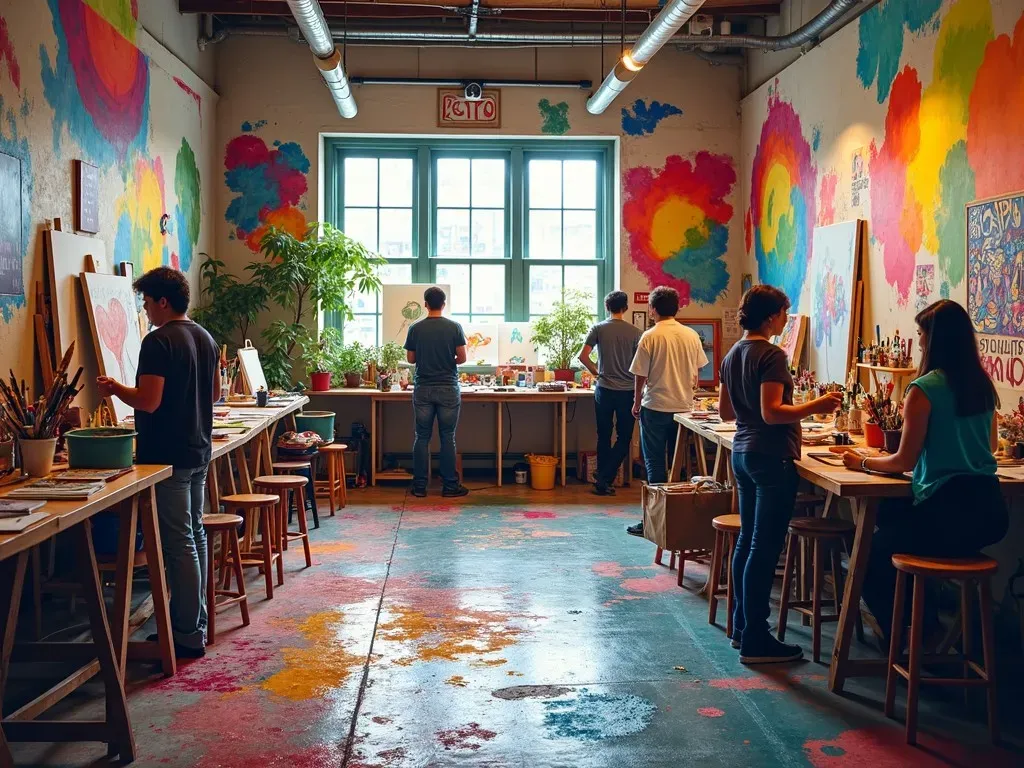When searching for “art supplies Portland”, you are diving into a vibrant and diverse array of resources tailored for artists and enthusiasts alike in this creative city. With numerous art supply stores spread throughout the area, Portland, Oregon, is a haven for artists of all styles and mediums. Whether you’re a painter, a sculptor, or a mixed-media artist, the right Supplies can transform your creative vision into reality.
Top Art Supply Locations in Portland
There is no shortage of excellent art supply stores in Portland. Below is a list of some of the best places to find everything from basic tools to specialty items. Each location offers unique products that cater to various artistic needs.
| Store Name | Address | Specialties | URL |
|---|---|---|---|
| Blick Art Materials | 1115 NW Glisan St. | Painting, drawing, framing | Blick Art Materials |
| Artist & Craftsman Supply | 2515 SE Hawthorne Blvd. | Wide variety of art supplies | Artist & Craftsman |
| I’ve Been Framed | 950 SE Foster Rd. | Custom framing, art supplies | I’ve Been Framed |
| Columbia Art & Drafting Supply | 1515 E Burnside St. | Drafting supplies, art books | Columbia Art |
| Collage on Alberta | 1639 NE Alberta St. | Unique paper goods, arts and crafts supplies | Collage |
Essential Art Supplies by Medium
Different mediums require specific supplies, and Portland’s art stores cater to a variety of artistic styles. Below is a detailed guide to essential art supplies categorized by medium.
Painting Supplies
- Acrylic Paints: Brands like Liquitex and Golden can be found at most stores.
- Oil Paints: Gamblin and Winsor & Newton are popularly stocked.
- Brushes: Look for a range of sizes and forms, including flat and round brushes.
- Canvas: Pre-stretched canvases and canvas boards are abundant.
Drawing Supplies
- Graphite Pencils: Ranging from HB to 8B for varied shading Techniques.
- Charcoal: Stick and pencil forms for rich, deep lines.
- Sketchbooks: Lightweight and heavier-weight paper options are available for various styles.
- Markers: Alcohol-based markers like Copic for vibrant illustrations.
Mixed-Media
- Collage Materials: Unique papers, fabrics, and found objects.
- Adhesives: Mod Podge, glue sticks, and tape are essential for mixed-media projects.
- Textiles and Fibers: Fabrics, yarns, and threads of various textures.
- Stamps and Inks: For adding intricate designs and patterns.
Reference Video
Community and Events
Portland’s art community is highly active, offering numerous workshops, classes, and events throughout the year. These gatherings present opportunities for networking, skill development, and collaboration. Many art supply stores also host in-store events or workshops that can enhance your creative process.
Upcoming Events (Sample Format)
| Event Name | Date | Location | Description |
|---|---|---|---|
| Watercolor Workshop | April 15, 2024 | Artist & Craftsman Supply | Learn the essential techniques in watercolor. |
| Mixed Media Night | May 10, 2024 | I’ve Been Framed | An evening of exploration in mixed media art. |
| Community Art Fair | June 1, 2024 | Local Park | Showcase your art and meet fellow artists. |
Frequently Asked Questions (FAQ)
1. Where can I find eco-friendly art supplies in Portland?
Many stores offer eco-friendly options, such as Artist & Craftsman Supply, which provides sustainable materials and non-toxic paints.
2. Are there shops that provide custom framing in Portland?
Yes, stores like I’ve Been Framed and Blick Art Materials have custom framing services that ensure your artwork is beautifully presented.
3. Can I get art supplies delivered in Portland?
Several stores, including Columbia Art and Blick, offer delivery services through their websites, providing convenience for local artists.
4. Where can I take art classes in Portland?
Local community centers, universities, and art supply stores often host classes and workshops for varying skill levels.
5. What should I consider when buying art supplies?
Identify your preferred medium and the specific requirements of your art style. Quality and usability of supplies are key factors, so it is advisable to consult Store staff for their recommendations.
Final Thoughts on Art Supplies in Portland
Portland’s art scene flourishes thanks to its wide selection of art supply retailers and a vibrant community of artists. Whether you’re decorating your home, gifting artwork, or pursuing a career in the arts, the plentiful options in Portland will guide you on your creative journey. For a deeper understanding of art supplies and where to find them, explore resources like Dick Blick for updates and new arrivals in the world of art.
This framework captures the essence of what art supplies Portland has to offer, guiding artists through an enriching and fulfilling experience.
